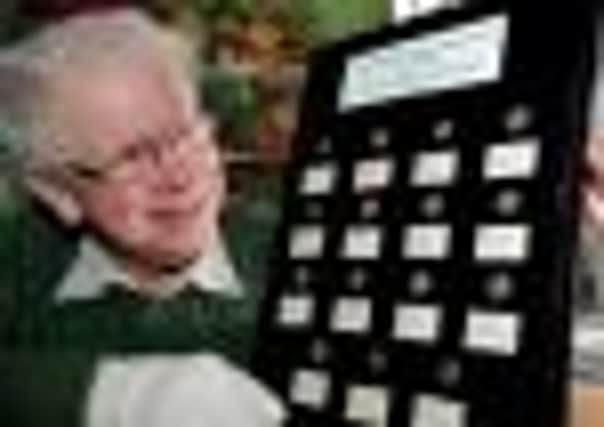Treasure trove under a Yorkshire housing estate


Painstaking operations are often carried out to remove items which date back thousands of years, and teams of academics pick slowly away at tiny pieces of pottery to preserve them.
But 66 years ago on January 10, a more practical trench was dug by a Yorkshire workman building a new housing estate, and his shovel excavations proved as fruitful as any archaeologist’s.
Advertisement
Hide AdAdvertisement
Hide AdAccording to the story, his spade suddenly struck and broke a pottery urn, from which cascaded a cache of 450 silver coins, a find which continues to thrill experts on Roman Britain to this day.
The coins were the talk of Darfield, near Barnsley, where they were found for several years, but after they were catalogued, the urn and most of the coins were taken to Sheffield for storage.
Just 15 of the glittering remnants of Roman life remained in the village after being donated to the village’s Foulstone Comprehensive School, where they were kept in a case fixed high on a wall.
But when pupils moved to a new building last year, a home was needed for the community’s prized possessions, and trustees of the village’s Maurice Dobson Museum were keen to snap them up.
Advertisement
Hide AdAdvertisement
Hide AdGeoffrey Hutchinson, chairman of the Darfield Area Amenity Society, which runs the popular museum, said the coins would now go on display to mark the anniversary of their discovery.
“The coins were found just on the edge of the village when new council houses were being put up at the end of North Street after the war,” said Mr Hutchinson, a former primary school teacher.
“It would have been lovely to have seen the face of the workman when he found them. He must have been very honest, because he resisted the temptation to stuff them in his pockets.
“Most of them were taken down to Sheffield, because at the time that was the only place in South Yorkshire that had a museum, and the coins were placed in their stores.
Advertisement
Hide AdAdvertisement
Hide Ad“The 15 that were given to the school were in a case and had been put up fairly high on a wall, so they weren’t really accessible to the public and not really seen by the schoolchildren.
“Last September Foulstone School merged with the school in nearby Wombwell and the old building will be demolished. We asked for some memorabilia to mark its time here.
“Among the photographs and other items we were given were the Roman coins, which the head of history had taken down and passed on to ensure they could finally be displayed to the public.”
The village museum opened in December 2000 after the Darfield Society raised £200,000 to refurbish a former corner shop run by one of its most colourful residents, Maurice Dobson.
Advertisement
Hide AdAdvertisement
Hide AdWhen he died in 1990, Dobson had left the building to the society for a museum, but it took a decade to for its trustees to access lottery and European cash to make the project work.
Mr Hutchinson added: “Since then we have been running quite successfully and people now come in and donate items to us to go on display, many of which are uniquely Darfield.
“Since we opened we have often been asked about the coins which hit the headlines when they were found . We feel they underline yet again the historical importance of the village.
“There is evidence of Anglo-Saxon and pre-Norman life here and we also know there was a packhorse trail which ran from west to east and I like to think that is why the coins were there.
“Perhaps there was a hostelry where the horses and their drovers forded the River Dearne and rested before heading to Doncaster the next day. The hoard could have been the innkeepers’ savings.”